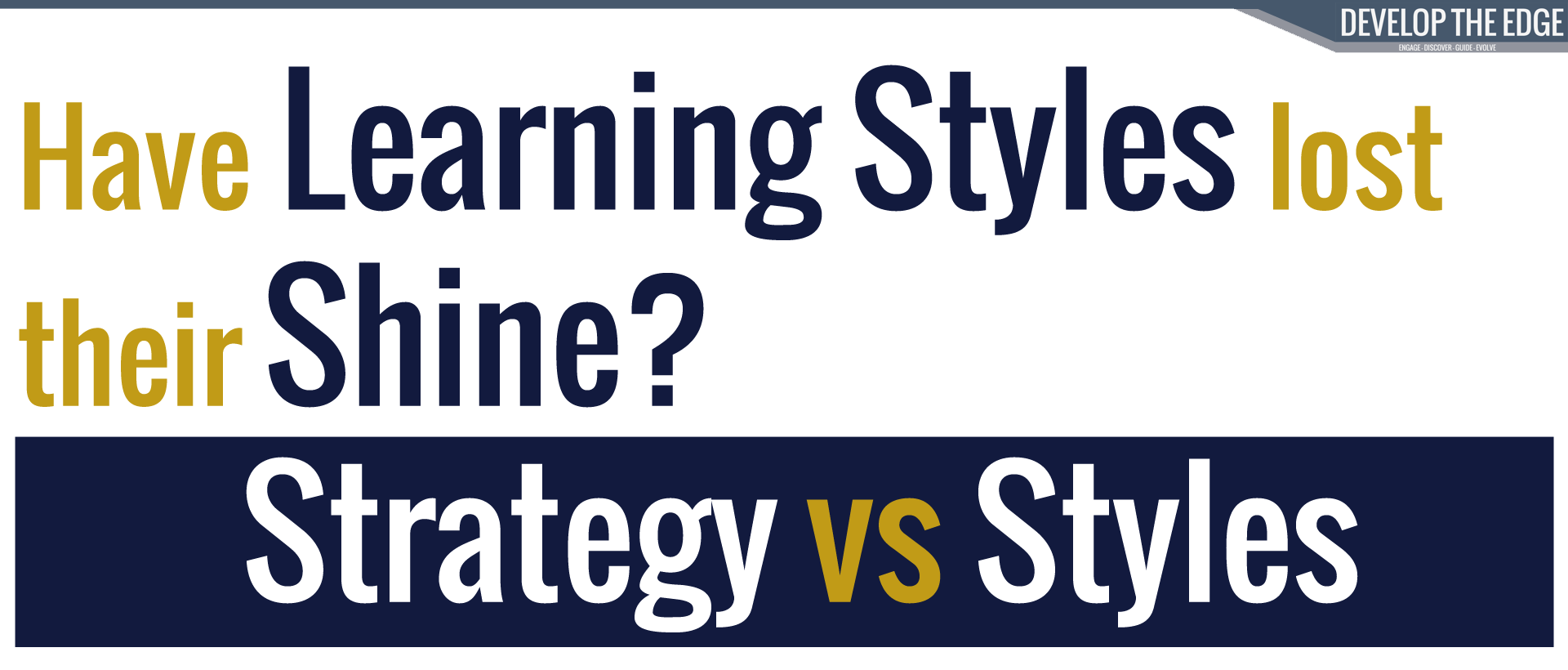
Have learning styles lost their shine?
Learning styles have been around for a long time, with the VAK model (Visual, Auditory and Kinaesthetic) being created in 1920 and Kolb’s model in 1984. Whilst there have been many adaptations throughout the years, alongside personality identifiers such as Myres-Briggs, there is little empirical evidence that they are right. Despite this lack of evidence though, the chances are you’ve heard people say they are a ‘visual learner’, an ‘INFJ’ or alternative at least once in your life! I know I’ve been guilty of it before…but it’s time to actually look at whether or not these tests have a positive impact on our ability to train and learn.
The truth is, we have all likely been through at least one personality or learning styles test in our lives. Recent studies have tried to understand whether or not these techniques are beneficial or detrimental to our ability to learn. We are going to look at 3 of these studies today to discover; what Learning Styles are, understand what the science says, take a look at Learning Strategies and how you can create effective learning content.
What are learning styles?
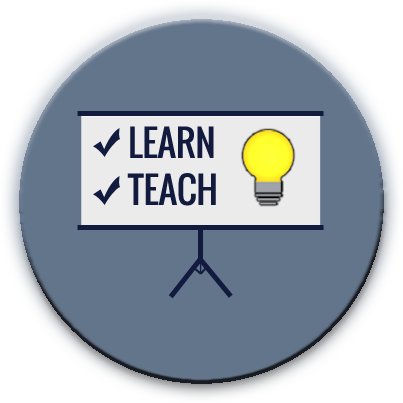
Learning styles were explored as a way for people to identify how they learn, so that trainers, teachers and coaches could provide a method of communication that best suited the individuals they were working with. Whilst there will be more styles than those I have listed below, these are the main ones; Visual, Auditory, Kinaesthetic, Verbal, Individual and Socio-Interpersonal.
For example, Visual learners learn by seeing, so in order to cater for this style, the trainer should provide visual stimuli such as a PowerPoint presentation, a video, simple images of the topic being discussed or provide handouts that the learner can take away from the session and look at. Auditory Learners need to hear the trainer speak, listen to music, read out loud and may prefer audio recordings instead or making notes.
The table below highlights the major styles, how people use them to learn and examples on how you can cater to these styles in a training room.
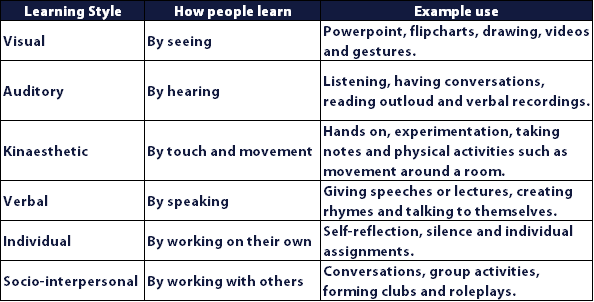
The 6 main Learning styles are meant to help people digest information by working on their strengths…but what does the science say about it?
The Science
To get a broad understanding of the scientific studies, we break it down into 4 main categories; Abilities vs styles, Multi-sensory, Style Scale and Strategy over Style. You will be able to make an informed decision by the end of this article on the value you place on Learning Styles and how you could utilise them to succeed.
1) Abilities vs Styles

In Lili Kumari Padhi and Deepanjali Mishra’s paper Learning How to Learn: An Analysis Through Styles and Strategies, they touch on the importance of working towards a person’s ability instead of their preferred learning style. This is because a persons preferred way of learning doesn’t necessarily mean it’s the best way to teach them – you need to take into account the person and what they are able to do.
For example, if you have a Kinaesthetic learner and you are training them on how to differentiate between different types of snow (yup, there are!) – you may not be able to just give them 4 variations and let them get to work. They may not have the ability or knowledge to differentiate yet (me neither) so whilst Kinaesthetic learners will want to touch the snow and get to grips with it, unless they already have a sound understanding on the different types of snow, they will still need verbal and/or visual instruction on how to identify their differences. Despite being a Kinaesthetic learner, they do not have the ability to just be taught using this style, they will need to blend it with other styles. If however, they had a sound understanding of the types of snow, getting hands on straight away may be beneficial to them – it all depends on ability.
The other consideration about ability is to ask yourself “am I teaching and training my delegates the most effective skills to learn and develop or just catering to their style?” – If you are training people on the works of a specific artist for example, your styles will mainly be visual – what brush strokes are used? What colours? How do colours contrast and blend? What style of painting is the artist known for? – All of these will require visual training aids and potentially kinaesthetic if you wanted your trainees to learn how to paint like the artist themselves.
Alternatively, take it to the next level, are you just teaching subject matter or are you giving your trainees valuable problem solving skills and learning strategies that they can utilise outside of the training room?

The key take away from this part of the study questions the validity of catering to a person’s learning style. What is more important for you? Getting your single message across or giving people the skills, tools and strategies to continue learning, adapting and evolving? Do you really want to rely solely on giving people information in their preferred learning style or do you want to mix it up and find more appropriate styles and strategies that will help them develop long-term skills and strategies?
2) Multi-Sensory

The science of learning shows us that we retain more information the more senses it passes through. Relying on a single style does not therefore give us the best opportunity to learn. In the case of our snow example, it may be an idea to watch a video on the different types of snow (visual) with narration covering the important differentiators (auditory) whilst having the snow available to touch (Kinaesthetic). By blending the different senses, our learner has a better chance of embedding the information.
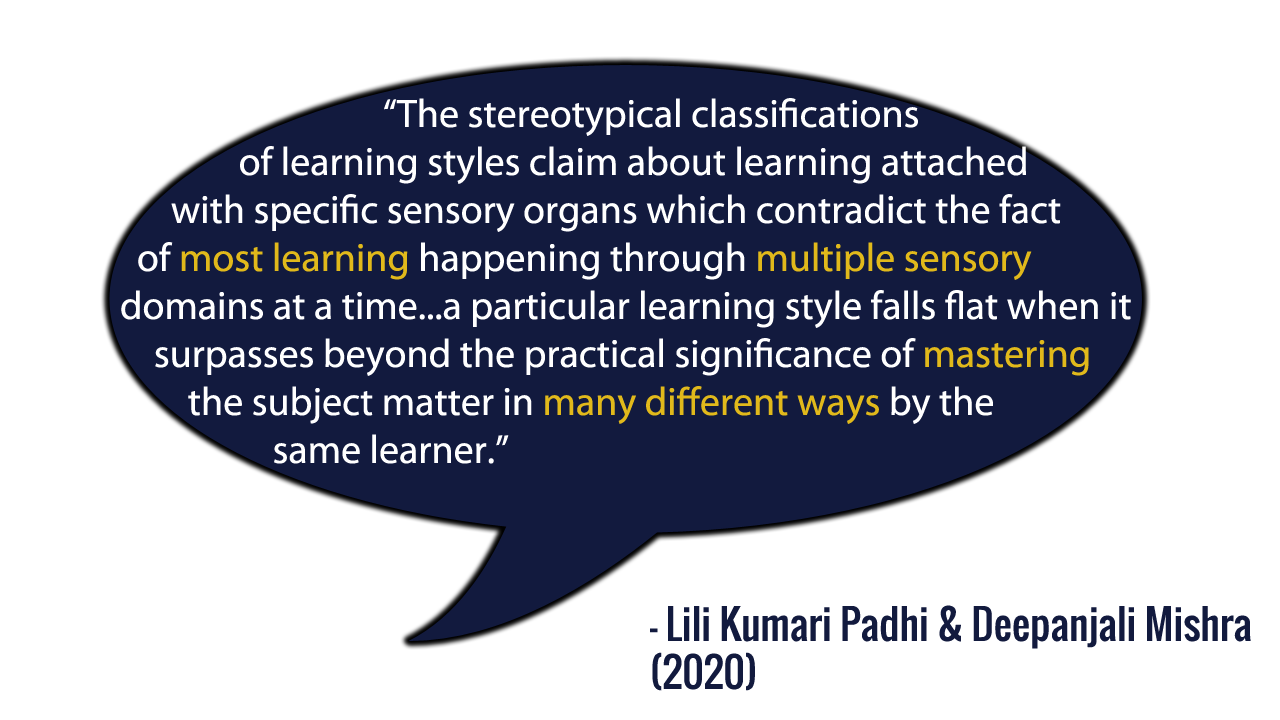
We also need to consider that we cannot simply cater for each learning style. If for example, we were training people on identifying different genres of music, you may struggle to cater for Visual and Kinaesthetic learners as the majority of what you would focus on would be auditory. You would play the music and discuss it, visuals may not play a big part in the learning and neither would getting hands on with it.
In ‘Make It Stick’ the author Peter Brown discussed that it is much more important for the style to match what is being taught instead of what people prefer. For example, visual instruction for film studies or geometry, verbal instruction for poetry, and kinaesthetic activities for crafting. When the delivery matches the topic, the information embeds better in the learners mind.
3) It’s a scale

One key criticism of learning styles and other personality tests is that all results are really on a scale instead of being a concrete answer. For example, you could be introverted at work but extroverted at home. You could be a visual learner for art but and auditory learner for music. Our personality and learning styles work as a scale, based on the situation at hand. Looking at a paper by An and Carr, they highlight the importance of using multiple styles when learning.
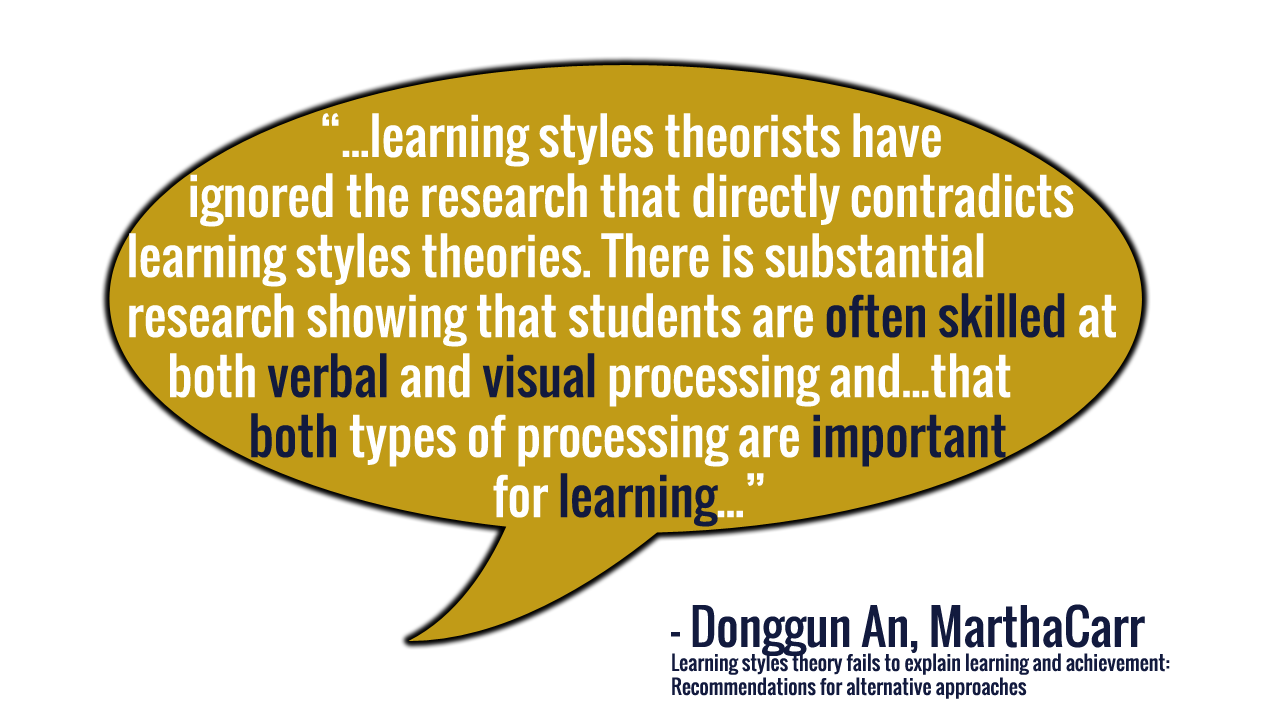
Further to mixing your styles up, when we think in absolute terms it can damage our ability to teach and take in different sources based on our beliefs. If you believe that you cannot learn using Visual methods, only auditory and that belief is based on a questionnaire or ’what feels right’ to you, your belief will limit the amount of information you can actually take in. If you aren’t so sure about that, in a 2007 study about mind-set, exercise and the placebo effect, researchers found that when cleaners were told that their job satisfied exercise guidelines, they became fitter in just 4 weeks – whereas the control group that were not told this information did not see these benefits. The full study can be found online but here is an extract from it:
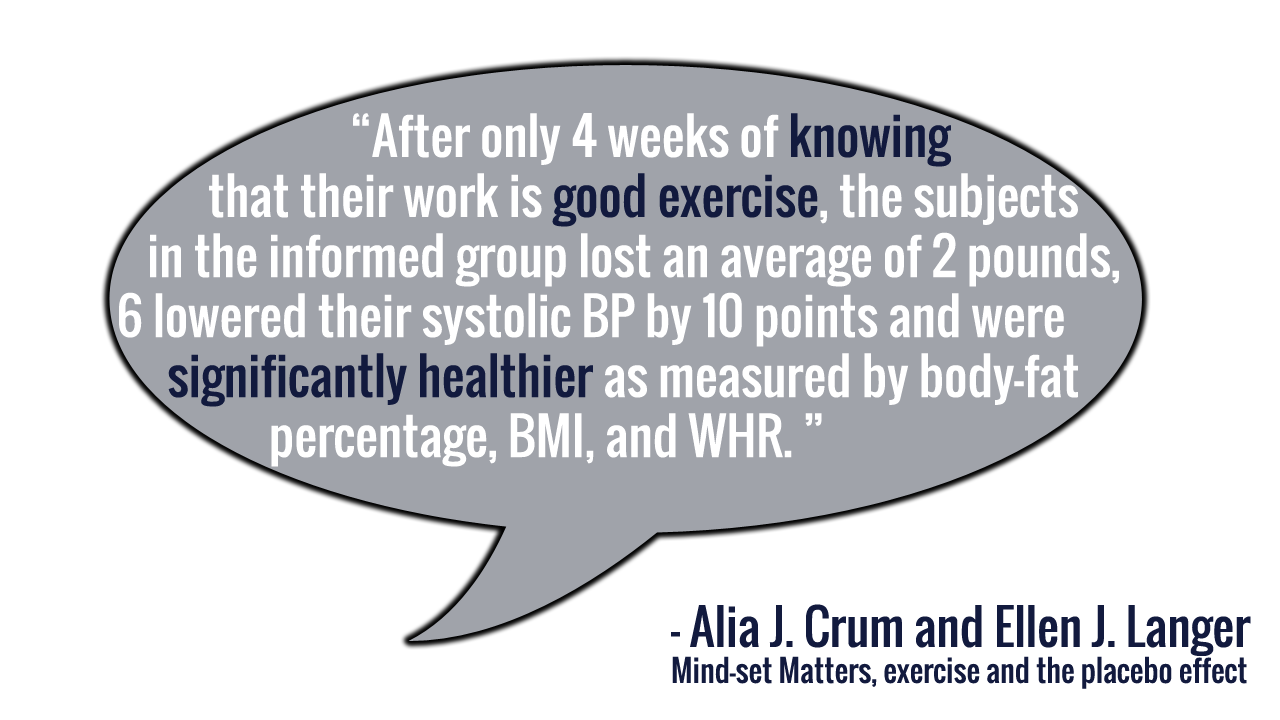
In fact, science argues that learning styles can be worked on, increasing your abilities in each style. If you limit yourself by putting your ability to learn in a pigeon hole, maybe its time to break free of this limiting belief. It’s important to work on your strengths – absolutely but balance this with working on your development areas as well to give yourself and others the best chance to learn.
4) Strategy over style

Science is telling us that the best approach to learn is to adopt a strategy, not a style. In their 2016 paper titles “Learning strategies” Dr Yana Weinstein and Dr Megan Smith provide readers with multiple techniques and strategies to aid with learning. We will briefly touch on the following techniques from their paper: Spaced, Interleaving, Elaboration, Concrete examples, Dual coding, Retrieval. Alongside this, in Lili Kumari Padhi and Deepanjali Mishra’s paper, they also discussed Oxfords 1990 review, out of these we will explore Affective strategy, Social Strategy and Metacognitive strategy.
Spaced Practice

This is where you study the same material repeatedly but with gaps in between. For this to work, it’s a good idea to schedule in your practice. Make it frequent initially but as you become more familiar with the content, start to space it out slightly. For example, you may want to start with 4 times a week for an hour a day. It might look like this: Monday, Tuesday, Thursday and Saturday. You may then start creating longer times between the study sessions and potentially just using Monday and Thursday, then over time just Monday and then fortnightly and then monthly. What is important is to keep dipping into what you want to study over time. Research has found that studying on individual days commits to long term memory much more efficiently than cramming does.
Tip for yourself: Find the best time of the day for you to study and set yourself a schedule, use reminders on your phone. As recall becomes easier, begin to space out your practice more. For plus points, use Interleaving (discussed next) alongside Spaced practice. One tactic you can use is Flash cards with the topic on 1 side and on the other side, all of the key points you need to remember – this method falls into a subcategory called ‘memory strategy’.
Tip for training: Where possible, put your training into a journey. A month before training starts, email out an agenda for the training and key points / objectives. Include a quiz that makes people think – ask them questions they are unlikely to know the answer to yet but will after training (this falls into its own strategy called ‘Compensation’ and helps to embed learning through effortful thought). Use posters with quotes or key concepts around the office or via email. Consider small and bite sized elearning content that can explain a key point in a few slides. – Try to keep the words minimal and an image that connects the content. Build this strategy up until the training and deliver your amazing content. Consider how you could use Spaced Practice in the training room to recap. Post-delivery, email out a summary piece (think of a one page guide or similar) and resend the same quiz you sent out in the beginning. Ask your Leadership team to build the content into coaching sessions and so on.
Interleaving

This approach is where you look at different ideas within in a sequence, mixing up the practice instead of just focusing on 1 area such as with block studying. For example, if you had 10 maths problems, instead of doin 5 addition problems followed by 5 subtraction problems, it would be more effective to interleave the addition and subtraction like this:
- 1+2 =
- 3+1 =
- 2 – 5 =
- 6 + 8 =
- 3-9 =
- 7+2 =
- 10 – 6 =
- 4 – 3 =
- 2 + 6 =
- 1 – 3 =
In the above example, we have interleaved the subtraction and addition questions instead of blocking questions 1 – 5 as addition and 6 – 10 as subtraction. The theory behind this is that it challenges people to find the right method for each problem, it keeps them constantly thinking about the right approach and how to apply the right method rather than blocking out the same problem and just practicing and repeating the same approach. You can swap the order of your Interleaving practice to make it more varied and see if you can make connections between the different topics you are studying. You can interleave as many topics as you want.
Tip for yourself: Mix up different topics all together with your interleaving and change the order each time.
Tip for training: It may be difficult to verbally recap whilst jumping from 1 topic to another, so consider quizzes interlaced in the training that mix up different parts of the session.
Elaboration

This strategy involves explaining a topic in your own words, in as much detail as possible. It
is also where you connect new information to information you already know and experiences you have been through. This helps you to elaborate and connect with the material in new ways and can help you see it from different perspectives.
It is believed that the reason this works is that it helps you connect to the material on a deeper level and this in turn, helps your store and remember it:
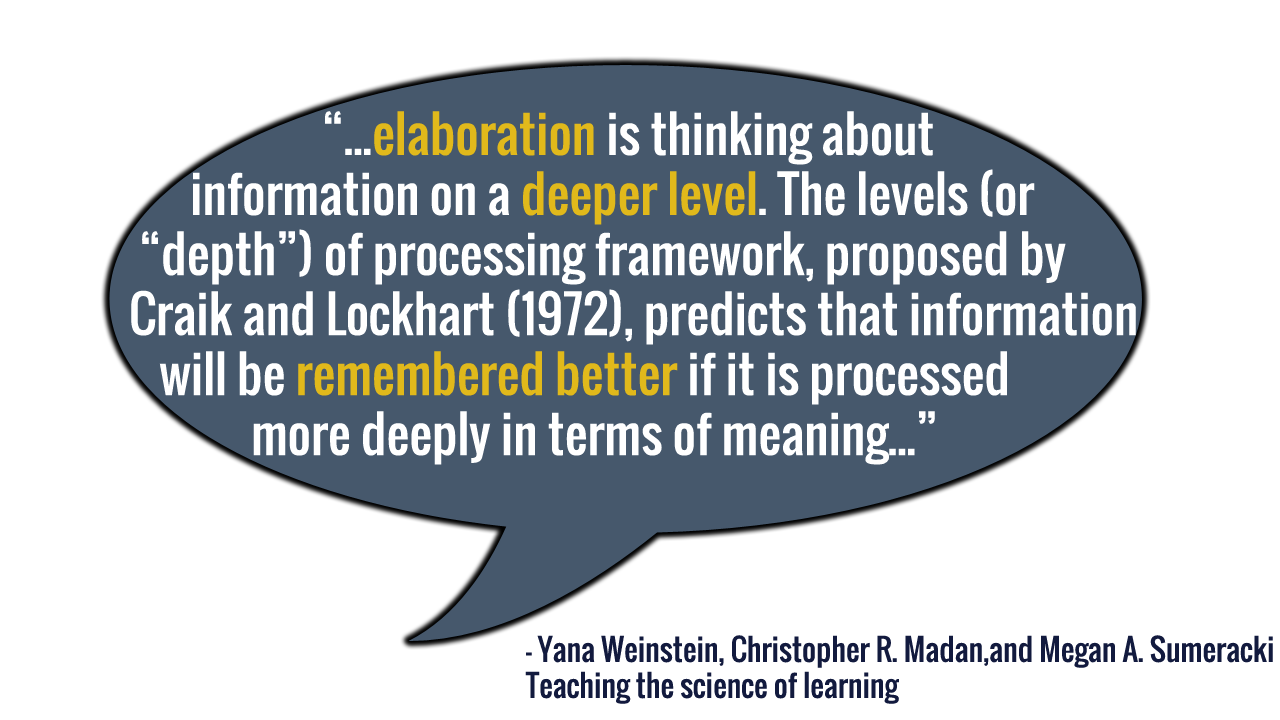
One of the key techniques for Elaboration is covered in Weinstein, Madan and Sumeracki’s paper, it is called ‘Elaborative Interrogation’ and involves students questioning the material they are reading with ‘how’ and ‘why’ based questions. The next step is for the students to answer these questions, finding a deeper understanding than they would have got just by reading the material.
Tip for yourself: Write down the key concepts of the material you are learning, formulate questions about ‘how’ and ‘why’ the concept is there and works. Answer these questions and attempt to link it to your life experiences or other knowledge.
Tip for training: Get the team to brainstorm questions about the content and its main concepts. When they are done, get them to discuss each question and try to find the answers. Facilitate the discussion and where you can encourage the team to share experiences that are similar.
Concrete Examples

This strategy is used to give a tangible example of an abstract idea. Similar to elaboration in that you are connecting a theory or concept to help embed the learning. One of the best ways to do this is to provide multiple Concrete examples that vary on the surface but have the same guiding principles or structure on a deeper level. Having multiple examples allows you to recall the abstract idea or concept better than just having 1 concrete example. The issue with only using 1 concrete example is that you may remember the example better than the abstract idea, which isn’t the intention. The trick here is to make the concrete examples as clear and connected to the abstract idea as possible, leave out any irrelevant features.
Tip for yourself: Similar to Elaboration, think about how you can turn a key concept into a concrete example. Let’s take an abstract idea, such as Freedom, first we will look at what freedom can mean and then provide concrete examples.
Abstract: Freedom by definition is “the power to act, speak or think as one wants.”
Concrete example 1: The diversity and inclusion policy at work gave people the right to express themselves and work towards their strengths. This policy empowered Amber to utilise her differences effectively and complete project B to a high standard.
Concrete example 2: American president Abraham Lincoln abolished slavery.
Concrete example 3: In the film Croods 2 (spoiler alert!) Grug makes the decision to eat all of the bananas, despite the only rule being not to eat any of them. Perhaps if Phil had explained the issue to Greg and Guy in the first place, this wouldn’t have happened.
Concrete example 4: In the United Kingdom, the principle of Free Speech enables people to share ideas and opinions with others. Whilst freedom of speech exists, any communication that is threatening or abusive, and is intended to harass, alarm, or distress someone is not allowed. If you decide to conduct yourself in this way, you may face the consequences such as fines or imprisonment.
Concrete example 5: Stephen Downing was wrongfully convicted and imprisoned for a crime he did not commit.
Concrete example 6: In 1215 the Magna Carter acknowledged that subjects of the crown were entitled to legal rights. It also made it so that the law applied to Kings and Queens as well.
Tip for yourself: As you study, search for cases or situations that can be explained through the concept you are learning.
Tip for training: Provide multiple concrete examples that are different on the surface but have the same underlying principles. Consider placing examples around the room and getting people to walk from one example to the next in order to find the abstract ideas behind the scenarios.
Dual Coding

This strategy utilises Multiple senses or formats to convey a message. You could include a draw a picture that illustrates the text beneath it for example or have an image on your PowerPoint which covers the abstract concept whilst you verbal deliver concrete examples. Dual coding can include touch, smell and feelings as well. Simply put, the more senses you can bring in, the better the information will be anchored. Obviously you can’t make every study or training session packed with sensory stimulation otherwise it may lost its impact or lead to overload but consider the different senses and formats you can bring in to drive key messages home.
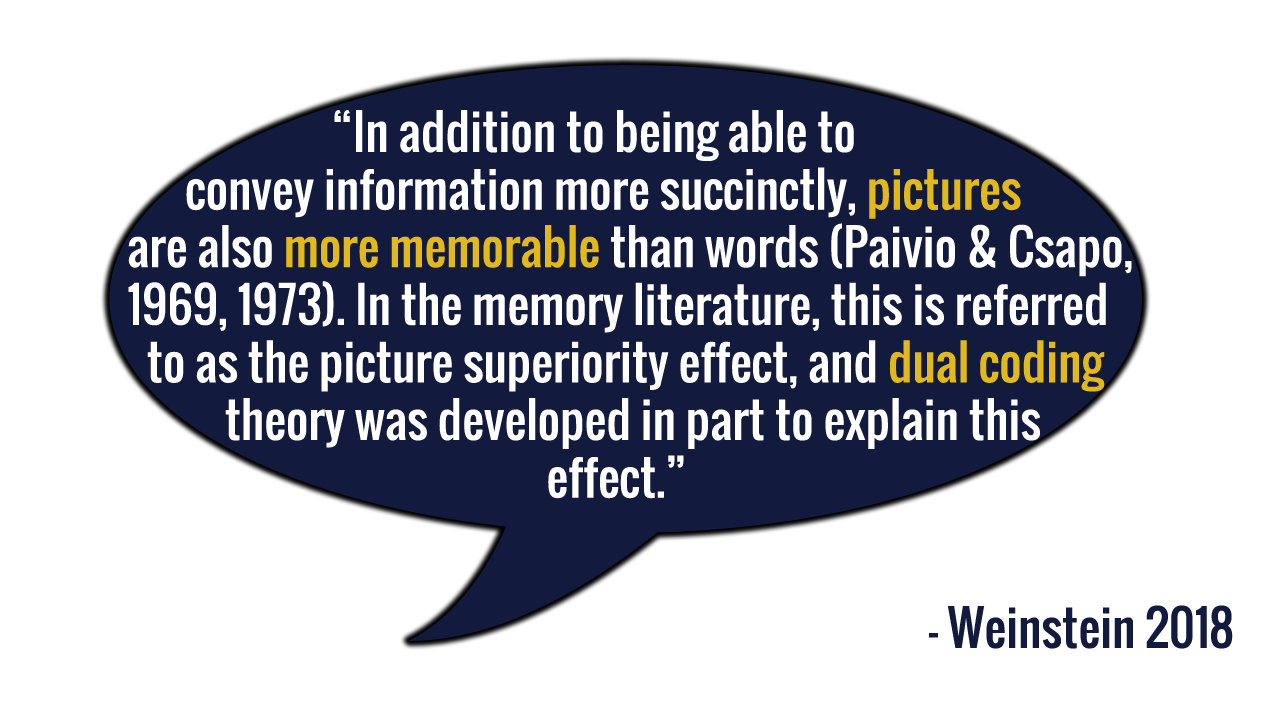
Tip for yourself: Consider how you can anchor the key concepts by using a mixture of visual, auditory, kinaesthetic, olfactory, emotions and so on. Try to connect what you are learning using a sensible format – you don’t want to evoke an emotion for every concept, its not always going to be possible to anchor a concept using a sense of smell – do what makes sense.
Tip for training: Use the space around the room or power point to include key images that will help people remember abstract concepts. Where possible and it makes sense, get people to recall memories and experiences and how they felt in those moments.
Affective Strategy

The focus point here is managing emotions and feelings, it looks at making learners feel comfortable, helps them regulate feelings, reduce anxiety and create a sense of motivation. Learning can cause anxiety in some learners, leading them to catastrophize, reach an Action Crisis (where you question whether the end result is worth the work you’re putting in) and potentially give up on their journey. Whilst we aren’t going into too much detail here, a good tactic consider is Maslow’s Hierarchy of Needs. In this pyramid, you need to ensure that as many of the levels are covered as possible, so that people can be comfortable in their environment and focus on what they are learning.
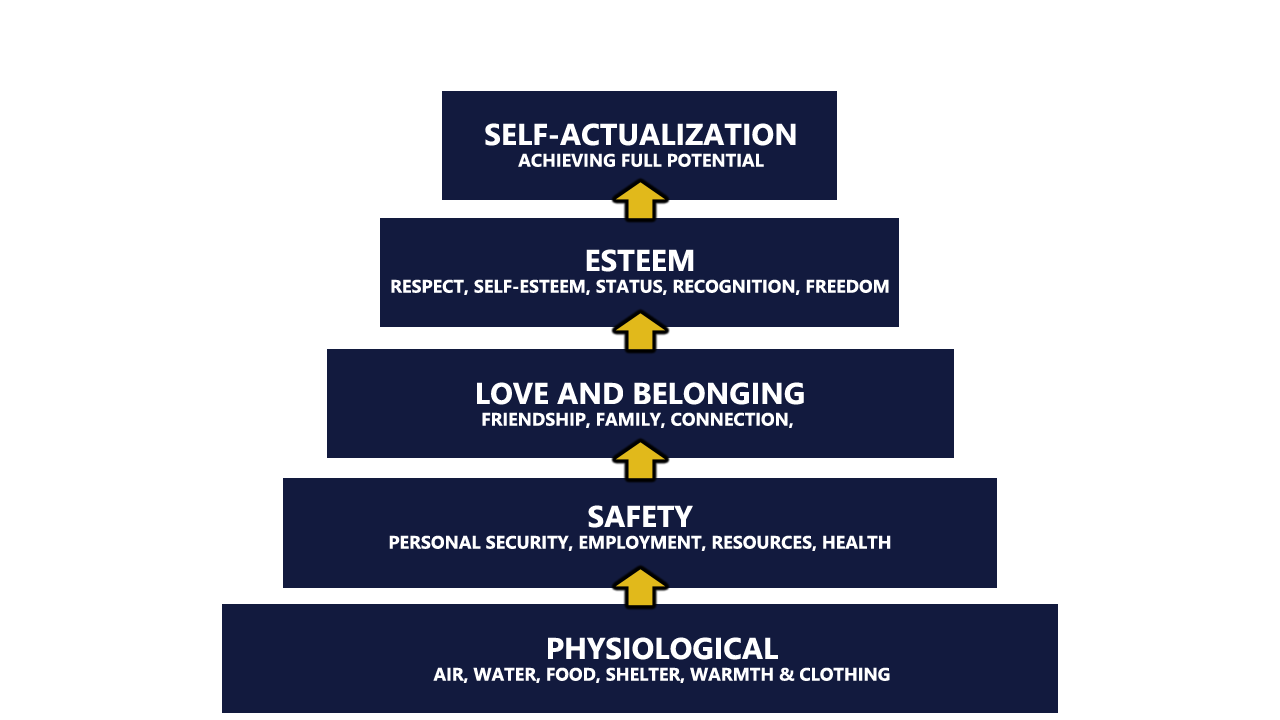
The bottom layers cover basic needs – such as food, shelter, security and so on. As we travel up the pyramid, we look at social acceptance, self-esteem and the top layer achieving your full potential. If you are satisfying all of the needs on the pyramid, the learning will feel easier and people will be less likely to suffer from anxiety or be distracted by the other areas of concern on the pyramid. Let’s face it, if you are hungry, need the toilet or are stressing about losing your home, it will be difficult to concentrate on learning. Put yourself in a good place physically and emotionally to learn.
Tip for yourself: Make the room comfortable, ensure water is at hand and that you are not hungry going into your studying. Remind yourself of the end result of your learning, what you hope to achieve and take a few moments to recognise how far you have already come by setting out on this journey.
Tip for training: Prep the room, put water, pens and paper out ready. Check the temperature, lighting and layout of the room – does it create a learning environment? When people come into the room, set expectations about it being a safe environment to share ideas and support each other. Go through the agenda with rough timings so people know when the next breaks are and understand the learning journey you are embarking on together. During group discussions, be positive in your facilitation and explore answers that initially appear to be wrong. Create psychological and physical safety to put people at ease.
Social Strategy

This technique involves learning through others, whether it is in a group discussion, with a mentor or by seeking out an expert. When we link this to Maslow’s Hierarchy of Needs, we see the importance of social strategies at both the love and belonging stage and esteem stage. Bring others in as a way to group learn or seek out the knowledge of an expert.
Tip for yourself: Seek out an expert in the field or local groups with similar interests.
Tip of training: Include group discussions and ensure that there are not any overly dominant people in the group. You could bring an expert in to talk or find videos of them online that you can share.
Metacognitive Strategy

This refers to the awareness the learner has on how they learn and the strategies they are using. Some examples of metacognitive strategies that you can use are: reflection, understanding and working towards your strengths / on your weaknesses, Mnemonic Aids such as rhymes or associations, visualisation strategies and so on.
Tip for yourself: Read up on different strategies (there are more than we have covered here!!!), try them out over a few months and find a few that work best for you.
Tip for training: Keep training varied, see if you can link key parts of the training to something people will see every day. In ‘Make it Stick’ the authors talk about a psychology professor that took his team to numerous coffee shops, it was there that they connected key parts of what they had learnt to the layouts of each coffee shop, including the ornaments, seating, menus, uniform and so on. When it was time for their exam, the students visualised walking into the coffee shop and instantly knew where to go mentally in the venue to retrieve information.
So what does this mean?
As most recent studies point out, there is no evidence to suggest that working towards your preferred learning style actually works. In An and Carr’s study, they quote Mckay to drive home this point:
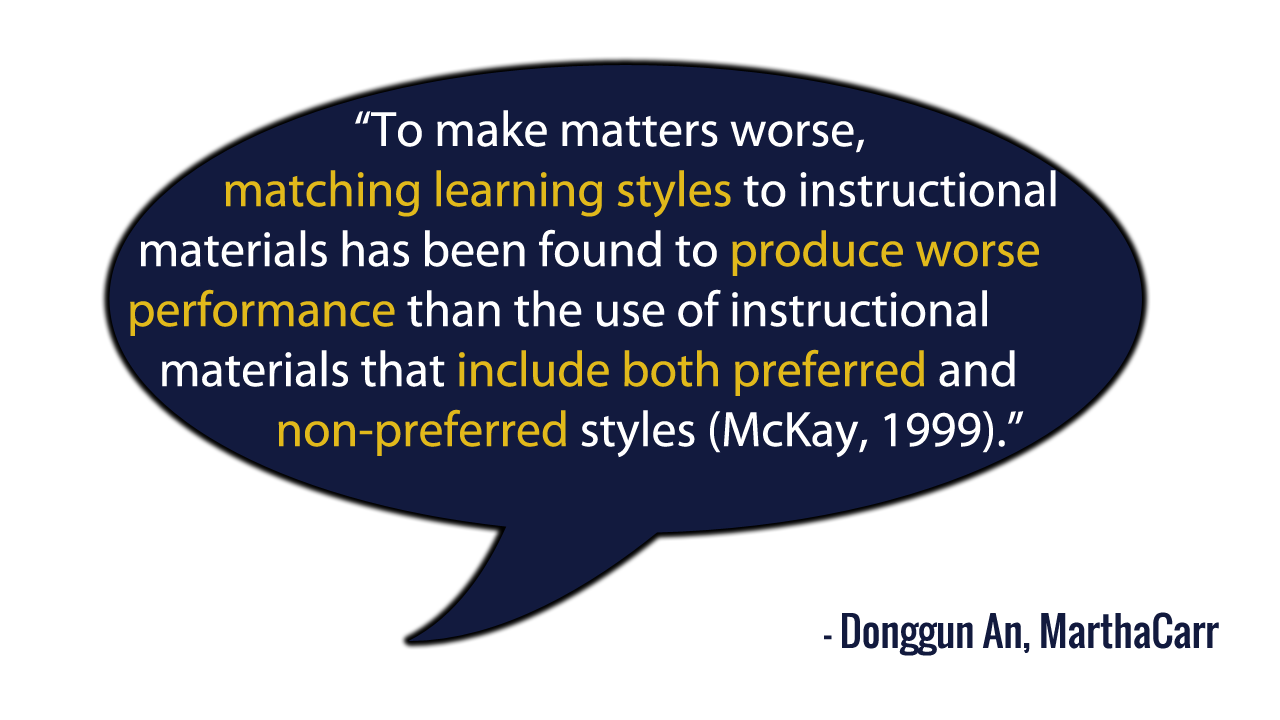
It appears that focusing on learning strategies is a much better solution for learning than focusing on learning styles. That doesn’t mean ignore them altogether though. What we do know is that the more variety you can bring into the training, the more engaging it is. Try to match the content with the learning style, it may not make much sense to cater for auditory styles when looking at images of cars to differentiate makes and models based solely on appearance.
Whilst I wouldn’t suggest catering your training or studying to preferred learning styles, it does make sense to use a variety of resources and techniques to increase engagement and help people remember key points on multiple sensory levels.
To add to this, some people fully identify with a specific learning style and they believe this to their core. It is incredibly difficult to educate people effectively when their identity is being called into question. In fact, you may be reading this and still thinking “Well, I still know I’m an Auditory learner! The science isn’t right for me.” – and that’s okay too. What’s important for people to acknowledge is that it is through hard work, that we learn the best. So if you have a learner who is adamant that they need to be taught in a specific style, help them understand that using a range of styles will help embed the material better because how hard they will have to work to assimilate the information. You can always use their (or your) preferred style of learning as a reward for going through the other learning styles.
We have discussed what learning styles are, looked at some more effective strategies to use both on ourselves and in the training room and briefly covered what that means for us going forward as Learning and Development professionals in the training room. At the bottom of this article you will find some resources that may help you plan and deliver engaging workshops based on scientifically proven learning strategies and ensuring your training is varied.
Let us know what you found most valuable about this article, connect with us by clicking on the Social Media icons at the bottom of the page.






